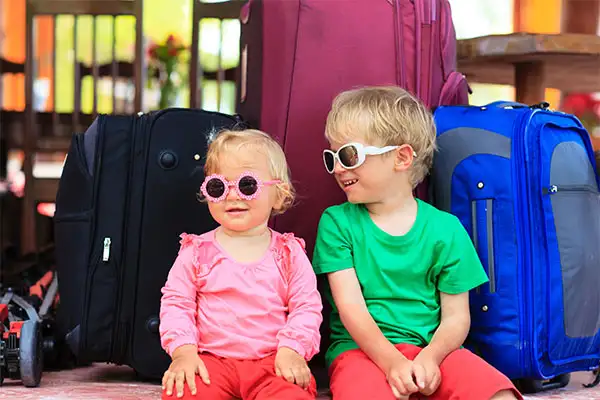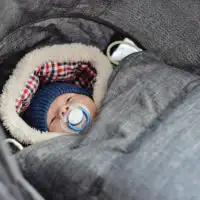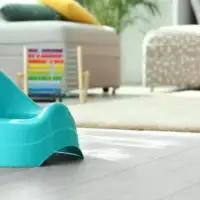Traveling with children who are in preschool or kindergarten can be absolutely marvelous. Kids are such curious creatures at this age and interested in what’s going on in the world around them. That said, patience is the name of the game when you’re on vacation with 3- to 6-year-olds; they’ll want to check out every bug on the hiking trail and every crab on the beach. Factor in extra time and try to be flexible. If your social butterfly is having fun meeting local kids at a neighborhood park, consider foregoing the children’s museum you had on the agenda. It’s your kids’ vacation, too!

Here’s some more advice for traveling with 3- to 6-year-olds, including pre-trip planning, potty-training tips, and ideas to make your travels go smoothly on the plane, on the road and on the ground.
Before You Go
Read Books About Your Destination
Prepare your children and get them excited by reading picture books that feature your upcoming vacation destination. Use the books to make a list of places the kids would like to see, and add them to your itinerary.
Introduce Foreign Foods at Home
If you’re lucky enough to be traveling to a locale where chicken nuggets and plain pasta won’t be on most menus, have your kids try some gyros, paella or enchiladas well before you set foot in a new country. That said, if you’re staying in a vacation rental with a full kitchen, packing a jar of familiar peanut butter and a box of spaghetti isn’t a bad idea either.
Check in With Your Child’s Teacher
One great part about traveling during the school year with young children is that a week of missed preschool or kindergarten isn’t going to derail their academic careers. Still, communicate to the teacher what your plans are, and find out if your child might do a special show-and-tell presentation with a favorite souvenir when he or she returns.
Tips: Taking Your Kids Out of School to Travel
Consider Reciprocal Museum Memberships
Purchase a membership to your local museum that is also good at other sites in the nationwide Association of Children’s Museum Reciprocal Program Network. This is especially helpful if you’re road-tripping. It won’t cost you anything to visit (aside from parking fees).
Scope Out the Bathrooms
Search out the bathroom at at theme park, beach, arcade, museum, restaurant, movie theater — you get the point. It’s best to know where the bathrooms are so you can get there at a moment’s notice.
Carry Stickers
These aren’t rewards, but they’re used to cover up the automatic-flushing sensors on unfamiliar toilets. “Sometimes kids wiggle around and trigger the sensor to flush before little bodies are finished,” says Jennifer Close, a mother of two and founder of Two Kids and a Map. “A little sticker lightly placed over the sensor prevents the toilet from flushing mid-use and traumatizing your newly potty-trained child.” Just peel off the sticker and throw it away when you’re done (lest you totally confuse the next toilet user).
In the Air
Have Your Child Wear Training Pants on the Plane
This is a tough one; if your 3-year-old is typically dry during the day, you may not feel like you want him or her to “regress” by wearing Pull-Ups. Plus, you might get resistance. It’s better to be safe than sorry though, with diaper-like undergarments if he or she is strapped in a plane seat and really has to pee. Similarly, if your child isn’t toilet trained at night, and he or she is lulled to sleep by the plane’s engines, you might be facing a messy accident if your child isn’t wearing training pants.
Bring Your Child’s Car Seat
If your preschooler is accustomed to napping well in his or her car seat, by all means, lug it on the plane with you, especially on an overnight or long flight. Similarly, some children just appreciate that familiar piece of kid gear in an unfamiliar place. The FAA approves most car seats for air travel, too. And if you don’t want to bring your own from home, you can rent them through companies and websites such as BabysAway.com, which has locations across the U.S.
Use a Car Seat Harness
On the other hand, if you don’t want to bring a bulky seat on the plane, you can check it, typically at no cost like a stroller at the gate. Put it in a trash bag or even wrap it in some bubble wrap to protect it in transit. Then, invest in a Child Aviation Restraint System (CARES) for your child over age one and weighing between 22 and 44 pounds. This belt-and-buckle harness that retails for about $75 is the only safety restraint certified by the FAA.
Walk the Aisles — With Caution
Getting up to stretch and move around is good for everyone on a long flight; just be careful and don’t get up more than necessary. Try to walk around before the flight takes off, too.
On the Ground
Don’t Stop the Car If Everyone Is Happy
Conventional wisdom says to plan rest stops about every two hours when you’re traveling by car with young children, but we suggest no matter how hungry you are or how much you need to use the bathroom, keep driving while your kids are happy. Only take a break when they start to fuss, and then make sure you fill up your gas tank, eat or buy snacks, and use the restroom, so that if your preschoolers happen to fall asleep, you don’t have to wake them.
12 Tips for Mastering the Road Trip
Pack Surprise Gifts
This advice can apply not only to long road trips, but also any vacation with airport layovers or many restaurant meals. Buy a few small, inexpensive toys and wrap them up. Ration them so you have a new toy to give out every so often during the trip.
Bring Out Unexpected Treats
Sure, you want to make sure your kids eat healthy on the road to stay healthy on the road, but sometimes special sugary treats for an extra-long trip can help keep everyone in a zen place. Tootsie Pops go a long way.
Stick to the Nap Schedule
If your preschooler is a napper at home, by all means, try to adhere to that routine on vacation. Plan breaks as needed. Chances are, you’ll be happy to put your feet up and rest for an hour or two, as well. Everyone’s happier after a mid-day break in the action.
If You’re Eating Out, Eat Early
You’ll avoid the crowds — both locals and tourists — if you’re seated at a restaurant for dinner by 5 p.m. Also ask for the check as soon as your meal arrives, in the event one of your kids has a meltdown.
Get Your Lunch at a Grocery Store
Skip the restaurant and make your own lunch with favorite foods from a local grocery store. Picnic fixings have an added bonus — the grocery store is typically much cheaper than eating at a restaurant. And isn’t saving money on vacation always a good thing?
More From Family Vacation Critic:
7 Best Resorts for Infants
9 Best Resorts for Toddlers
Our team of parents and travel experts chooses each product and service we recommend. Anything you purchase through links on our site may earn us a commission.






